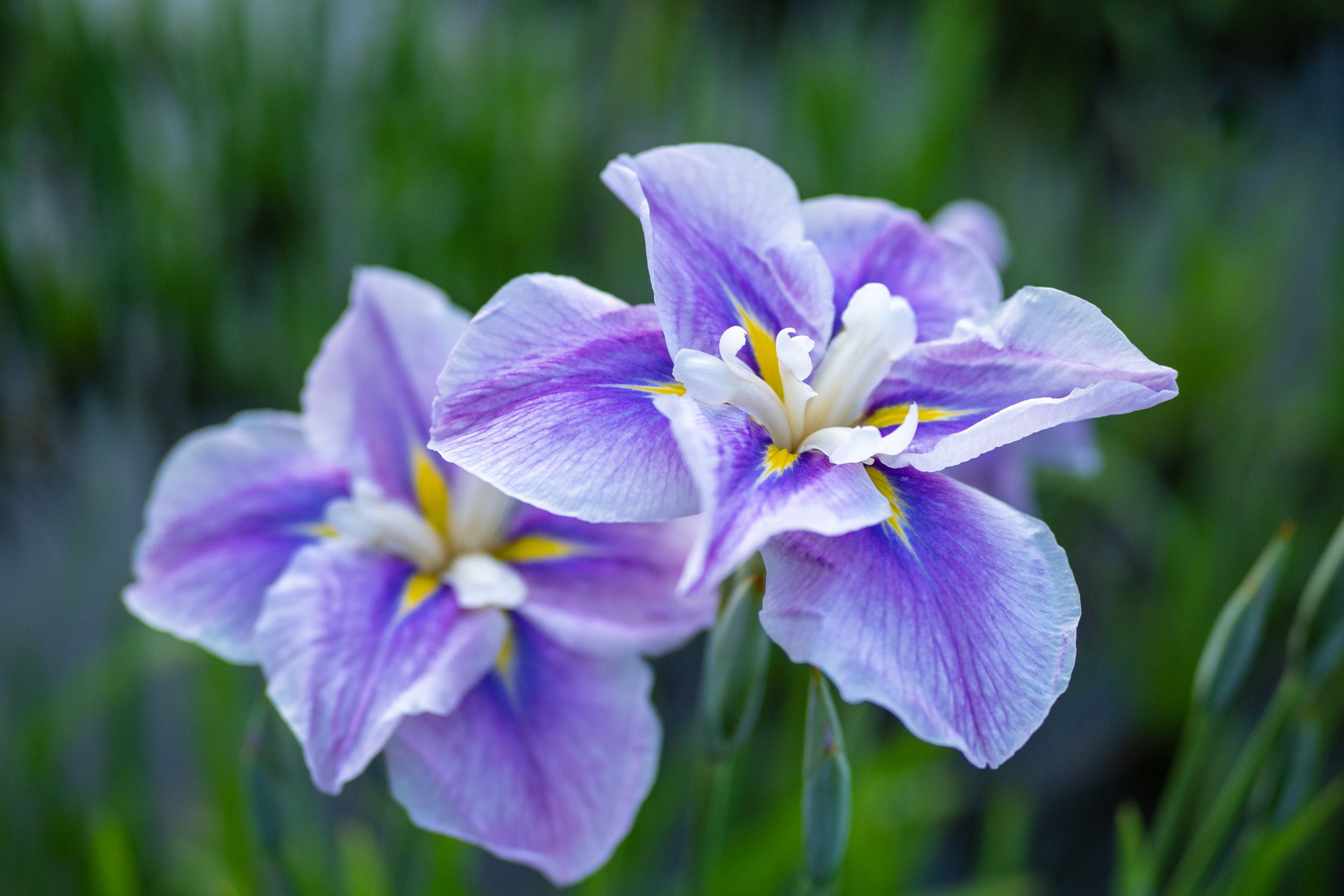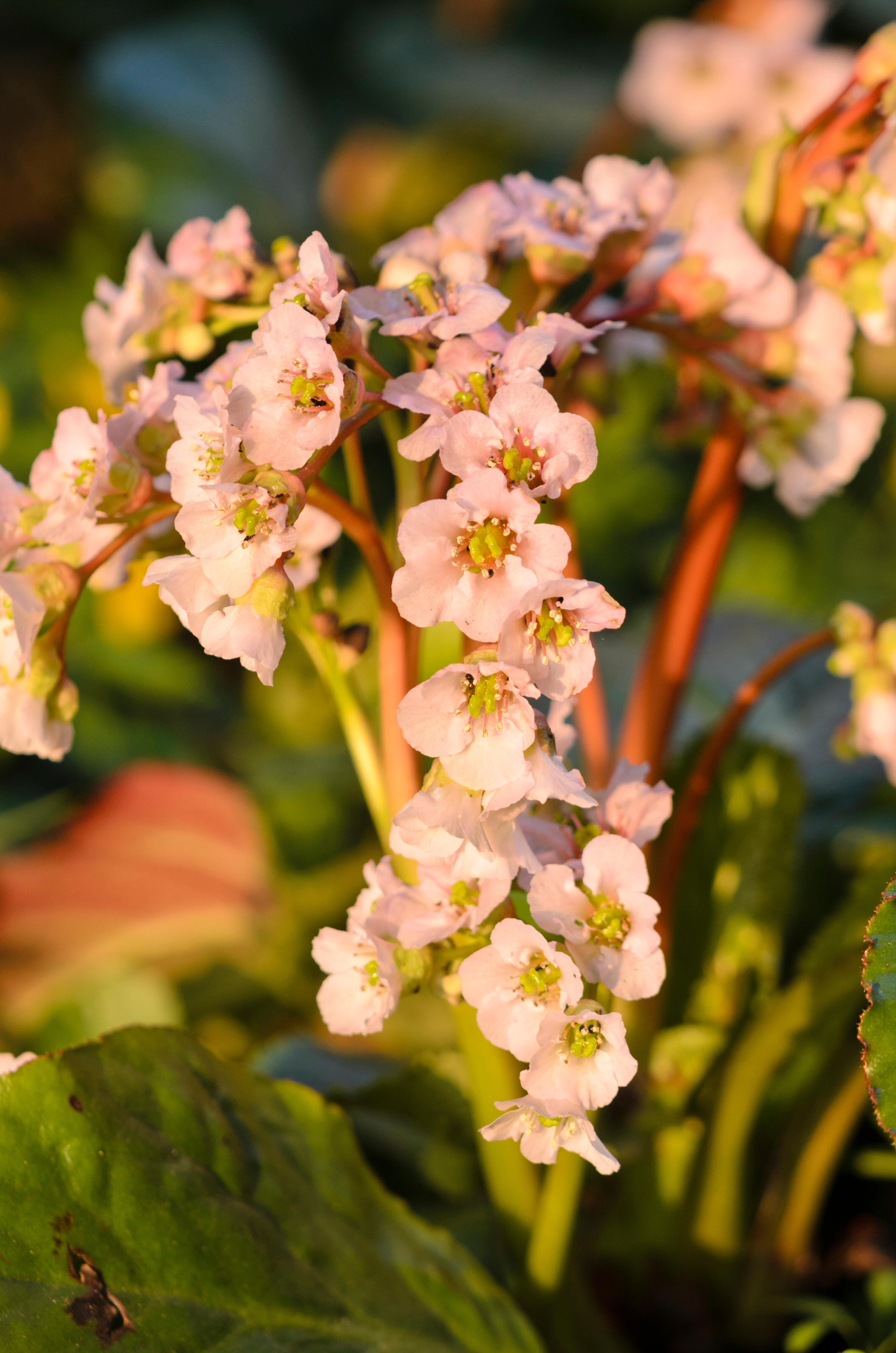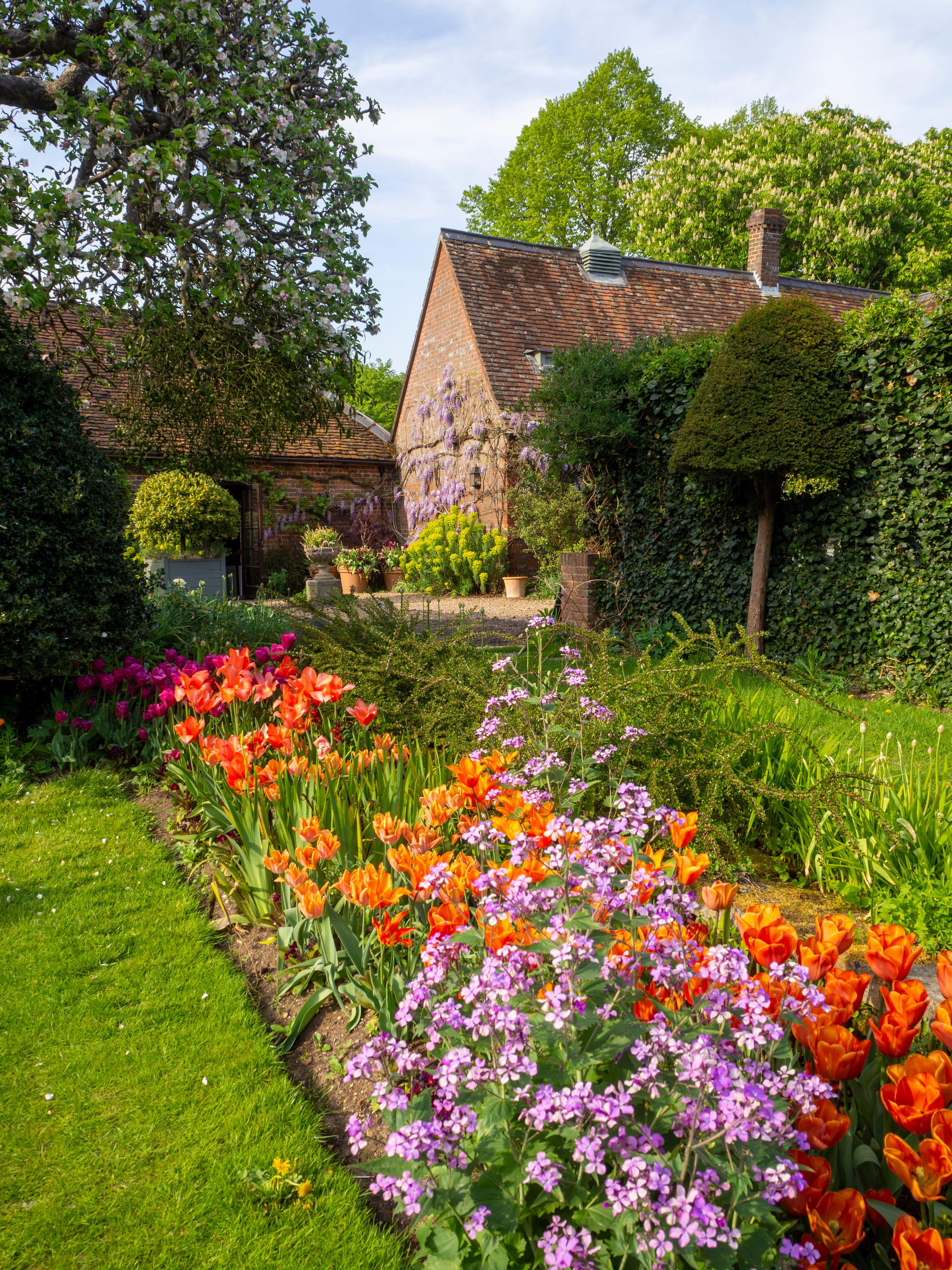Mark Griffiths: The irises that are fit to be the apple of any gardener's eye
Mark Griffiths takes a look at the famed irises of Japan, and how their influence has been felt to Britain — and back.

Today, Horikiri is a district in downtown Tokyo, but it was a hamlet on the fringe of the city in 1857 when Hiroshige made it the subject of one of his ‘One Hundred Famous Views of Edo’ series. Aptly for an artist of the floating world, his print shows what appears to be a lake with three long-stalked irises in dramatic close-up in the foreground and a mass of the same emerging from the water along the far shore.
These plants are some of the 400 or so cultivars of Iris ensata (syn. Iris kaempferi) that were grown in Japan in the mid 19th century. By then, hanashobu (‘flower[ing] Acorus calamus’), as this species is called there, had been the subject of a 50-year-long breeding craze. It transformed the flowers of wild Iris ensata — demure, purple and of typical flag-iris shape — into the most flamboyantly opulent blooms yet seen in a hardy herbaceous perennial.
As much as 6in across, they were circular in outline, frilled or ruffled, satin-textured and sometimes double. They ran from darkest violet to brilliant white by way of blues, mauves, purples, plums, reds and pinks. Most had flashes of gold at their centres; in many, the petals were stippled, mottled, edged, veined or stained with contrasting colours.
Although, delightfully, the main breeders of these campest of flowers were austere, high-ranking samurai, hanashobu were soon enjoying a following with the masses. When in bloom, in June and July, gardens devoted to them swarmed with spectators. One of the most celebrated was in Horikiri.
To this day, irises are grown there as they were in the 19th century, in beds of loam that’s acidic, rich and moist. For purely aesthetic reasons, they’re flooded, as paddy fields are, to a few inches deep just before the plants bloom. After flowering, the water is drained away or allowed to evaporate.

Naturally, if disastrously, some of the British who visited hanashobu gardens, or who saw Hiroshige’s woodcut of Horikiri, assumed that this inundation was permanent and that Iris ensata and cultivars were full-on aquatics or paddling marginals. They are neither. Planted in the shallows of a pond or plunged in a waterlily basket, they may flourish in their first summer if it happens to be a hot one, but they’ll go into decline soon afterwards. To succeed long-term in our climate, they need to be in strong sun and an acid soil that’s damp to boggy — in the ground alongside a pool, perhaps, but not in the water.
My apologies if you knew this. It’s simply that I’ve recently seen these plants advertised in the Press as ‘Japanese water irises’ and been consulted by pond-owners who have lost them to drowning. It’s splendid that Iris ensata cultivars are stealing our hearts again, but, this time, let’s grow them for keeps.
Exquisite houses, the beauty of Nature, and how to get the most from your life, straight to your inbox.
For a Japanese species that will flourish in cool, shallow water, choose Iris laevigata. Unfurling in May and June, its silken fleurs-de-lys are typically blue or purple and pure white or two-toned in its comparatively few cultivars. From the 7th century onwards, the darker-pigmented petals were used to produce the fabric colours that could be worn only by the imperial family and nobility, hence this beautiful plant’s vernacular name, kakitsubata, from kakitsuke hana ‘dye flower’.
It, too, was immortalised by an artist. In the 1700s, Ogata Korin painted drifts of its lapis blooms and malachite leaf sheaves across lakes of gold on two pairs of screens that are now world famous.
Kakitsubata are no longer the only Japanese water irises available to us. In the early 1990s, Hiroshi Shimizu began crossing Iris ensata with Iris pseudacorus, our native yellow flag. This resulted in the Pseudata irises, or Eyeshadow irises as he calls them, on account of the glowing ocellus at the base of each massive, down-turned lower petal — an eye lidded and lashed with mascara-dark lines.
Vigorous and hardy, Pseudatas exult in both damp ground and shallow water. Their foliage is luxuriant, and often hued primrose to chartreuse on emerging. Their flowers are lavish in proportions and palette — egret white, corn yellow, sunset amber, dusty rose, antique bronze, parfait amour purple, limpid sapphire, and always with those kohl-rimmed eyes.
The biggest break in Iris-breeding since the samurai took it up, these hybrids are now being offered by UK suppliers, such as Lilies Water Gardens. I suspect we will embrace them and I’m sure they’ll feel at home: Shimizu-sensei grew their Iris pseudacorus parents from seeds collected in Britain.

Mark Griffiths: Why gardening is vastly richer, wider and deeper than in Gertrude Jekyll’s day
Gertrude Jekyll loved bergenais, but she'd be the first to agree that the variety around today far outshines what was

Mark Griffiths: How to grow a money plant in your own back garden

Credit: Elizabeth Debenham / Alamy
Mark Griffiths: The joy and consolation of 'Slow Gardening' in this savage yet beautiful spring
The gardener and writer Mark Griffiths has had to unlearn the habit of a lifetime, put his diligence to one